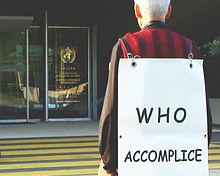
Speaking at the University of South Carolina at a time of increasing debate about nuclear power, the Russian scientist likened an atomic energy disaster to that of a war, with one major distinction. In war, the enemy is known immediately, she said. But with a nuclear accident, “We have an invisible enemy that can kill you many years later,’’ she said, referring to the long-term health effects of radiation exposure.
In the case of the sickened dog, it had survived more than a year after the Chernobyl explosion and radiation leak sent area residents fleeing. But the animal had begun to succumb by the time Manzurova arrived in late 1987 to study the area. Many people who worked with her at Chernobyl died years later.
Manzurova, who was working at a secret Russian nuclear facility before Chernobyl, spent more than four years studying and helping with cleanup at the Chernobyl site. She was known as a “liquidator,’’ one of thousands of people assigned by the Soviet Union to work at Chernobyl following the accident. Critics say liquidators were used by the Soviet Union to help cover up the embarrassing evidence.
Manzurova, through an interpreter, made her remarks at USC during a U.S. tour to raise awareness of nuclear safety issues and remember Chernobyl. Manzurova’s talk Tuesday not only recalled the April 26, 1986, Chernobyl accident, but it also occurred on the 32nd anniversary of the Three-Mile Island meltdown in Pennsylvania. She was accompanied by Russian anti-nuclear activist Natalia Miranova.





 The Trump administration has said it is immediately pausing all leases for offshore wind farms already...
The Trump administration has said it is immediately pausing all leases for offshore wind farms already... International Atomic Energy Agency (IAEA) Director General Rafael Grossi said on Friday that an IAEA team...
International Atomic Energy Agency (IAEA) Director General Rafael Grossi said on Friday that an IAEA team... Two fossil-fuel billionaires with close ties to Donald Trump bought millions of shares in the company...
Two fossil-fuel billionaires with close ties to Donald Trump bought millions of shares in the company... The Trump administration on Thursday announced new oil and gas drilling off California’s and Florida’s coasts,...
The Trump administration on Thursday announced new oil and gas drilling off California’s and Florida’s coasts,...






























